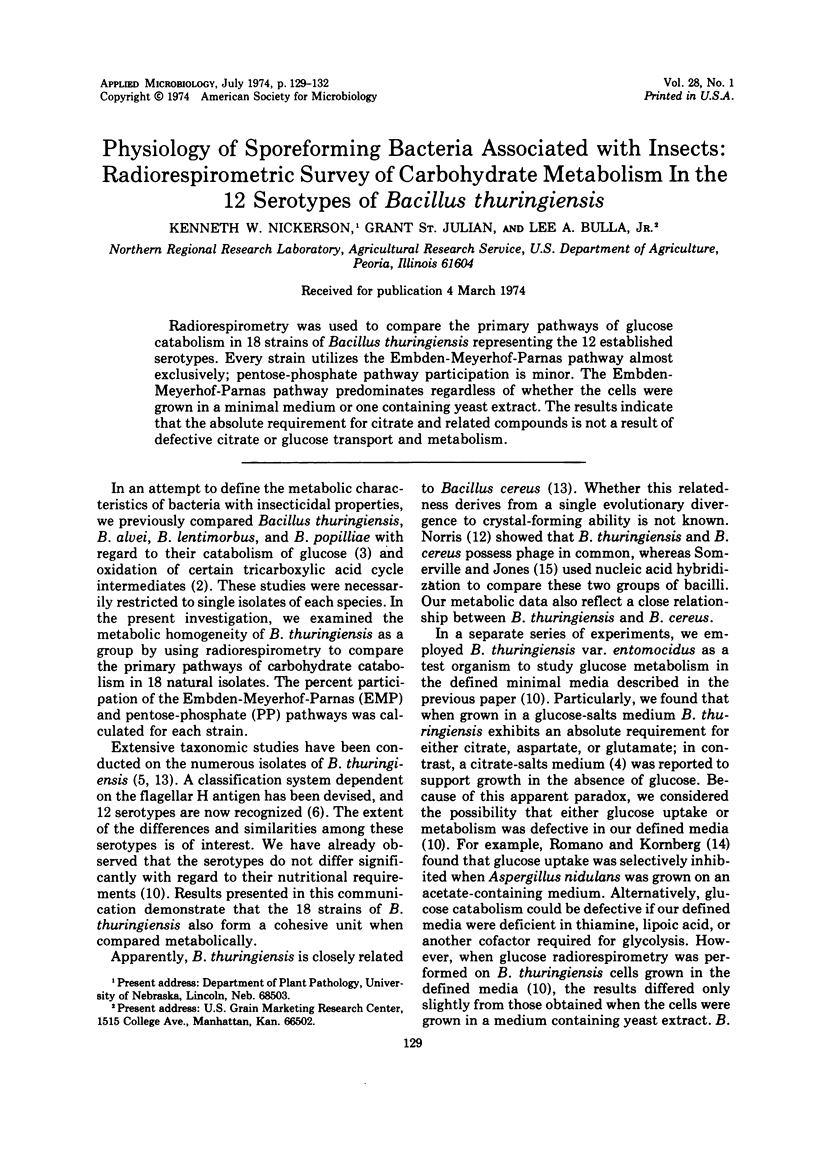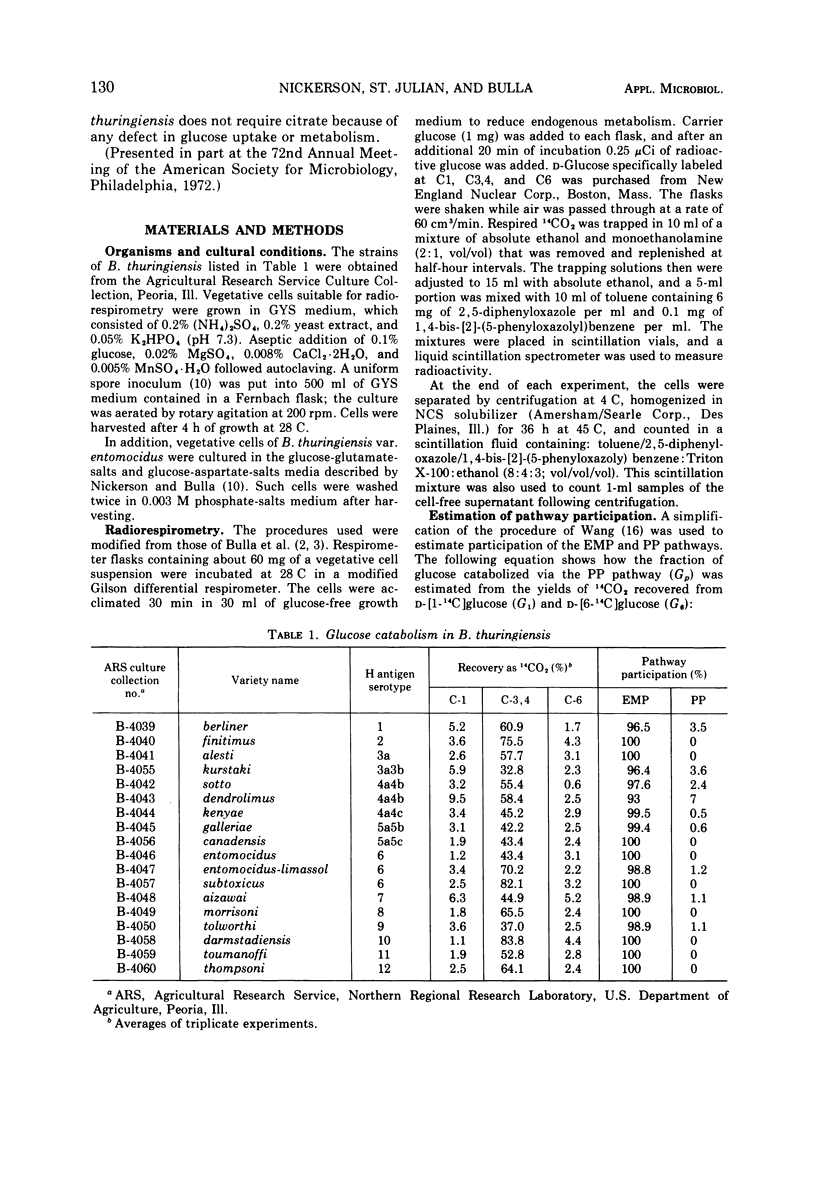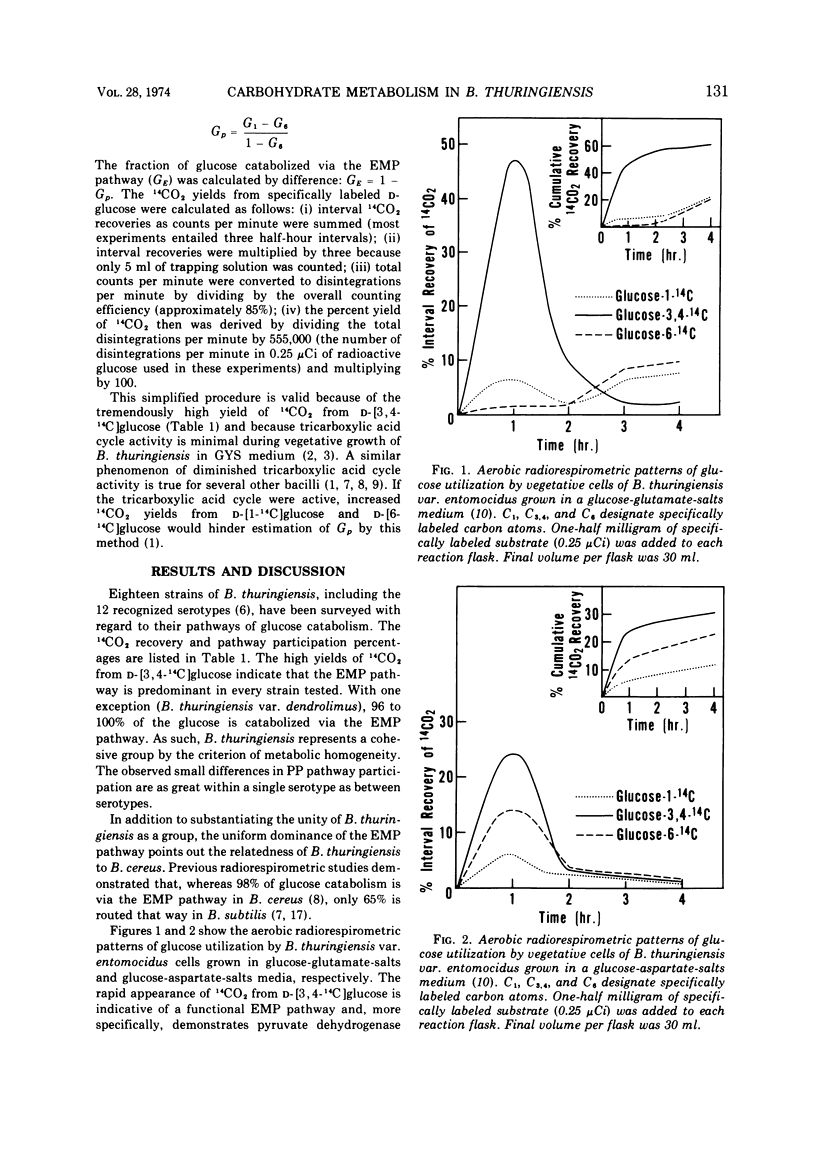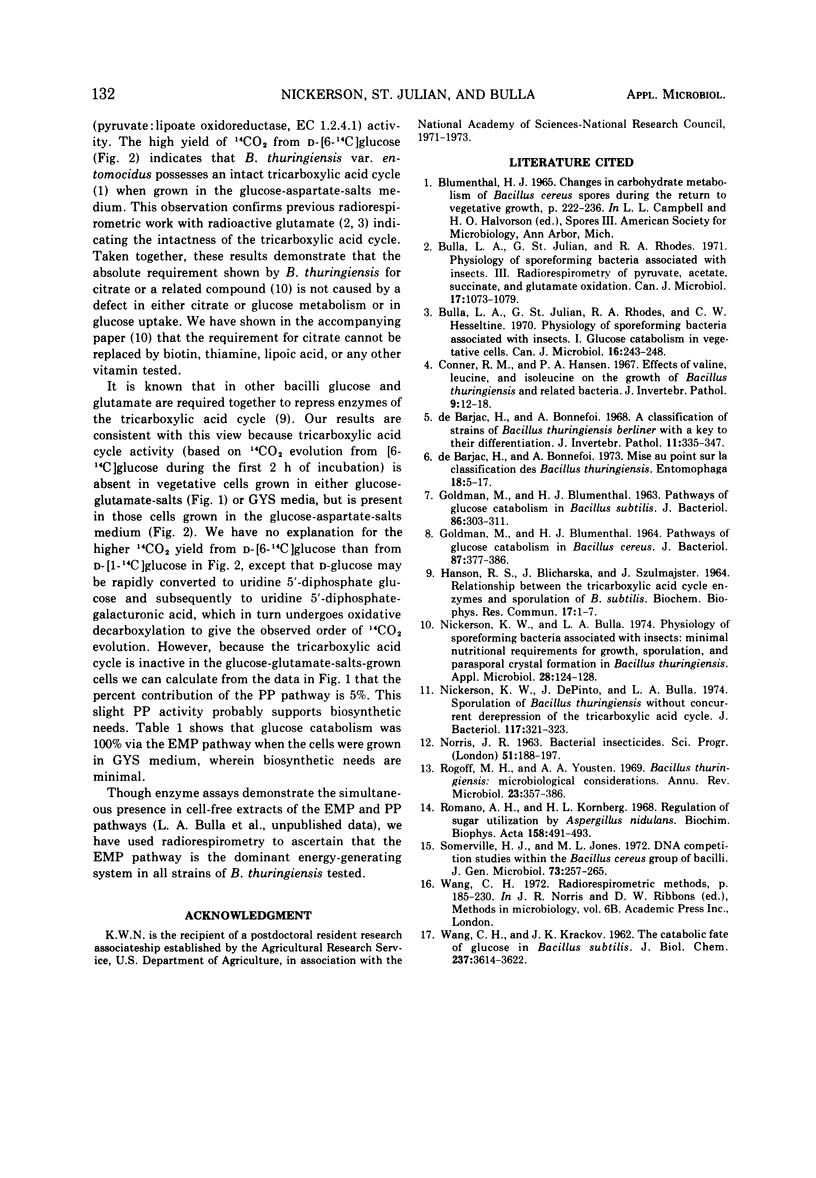Abstract
Radiorespirometry was used to compare the primary pathways of glucose catabolism in 18 strains of Bacillus thuringiensis representing the 12 established serotypes. Every strain utilizes the Embden-Meyerhof-Parnas pathway almost exclusively; pentose-phosphate pathway participation is minor. The Embden-Meyerhof-Parnas pathway predominates regardless of whether the cells were grown in a minimal medium or one containing yeast extract. The results indicate that the absolute requirement for citrate and related compounds is not a result of defective citrate or glucose transport and metabolism.
Full text
PDF



Selected References
These references are in PubMed. This may not be the complete list of references from this article.
- Bulla L. A., Jr, St Julian G., Rhodes R. A. Physiology of sporeforming bacteria associated with insects. 3. Radiorespirometry of pyruvate, acetate, succinate, and glutamate oxidation. Can J Microbiol. 1971 Aug;17(8):1073–1079. doi: 10.1139/m71-170. [DOI] [PubMed] [Google Scholar]
- Bulla L. A., St Julian G., Rhodes R. A., Hesseltine C. W. Physiology of sporeforming bacteria associated with insects. I. Glucose catabolism in vegetative cells. Can J Microbiol. 1970 Apr;16(4):243–248. doi: 10.1139/m70-045. [DOI] [PubMed] [Google Scholar]
- Conner R. M., Hansen P. A. Effects of valine, leucine, and isoleucine on the growth of Bacillus thuringiensis and related bacteria. J Invertebr Pathol. 1967 Mar;9(1):12–18. doi: 10.1016/0022-2011(67)90036-5. [DOI] [PubMed] [Google Scholar]
- GOLDMAN M., BLUMENTHAL H. J. PATHWAYS OF GLUCOSE CATABOLISM IN BACILLUS CEREUS. J Bacteriol. 1964 Feb;87:377–386. doi: 10.1128/jb.87.2.377-386.1964. [DOI] [PMC free article] [PubMed] [Google Scholar]
- GOLDMAN M., BLUMENTHAL H. J. PATHWAYS OF GLUCOSE CATABOLISM IN BACILLUS SUBTILIS. J Bacteriol. 1963 Aug;86:303–311. doi: 10.1128/jb.86.2.303-311.1963. [DOI] [PMC free article] [PubMed] [Google Scholar]
- Nickerson K. W., Bulla L. A., Jr Physiology of sporeforming bacteria associated with insects: minimal nutritional requirements for growth, sporulation, and parasporal crystal formation of Bacillus thuringiensis. Appl Microbiol. 1974 Jul;28(1):124–128. doi: 10.1128/am.28.1.124-128.1974. [DOI] [PMC free article] [PubMed] [Google Scholar]
- Nickerson K. W., De Pinto J., Bulla L. A., Jr Sporulation of Bacillus thuringiensis without concurrent derepression of the tricarboxylic acid cycle. J Bacteriol. 1974 Jan;117(1):321–323. doi: 10.1128/jb.117.1.321-323.1974. [DOI] [PMC free article] [PubMed] [Google Scholar]
- Rogoff M. H., Yousten A. A. Bacillus thuringiensis: microbiological considerations. Annu Rev Microbiol. 1969;23:357–386. doi: 10.1146/annurev.mi.23.100169.002041. [DOI] [PubMed] [Google Scholar]
- Romano A. H., Kornberg H. L. Regulation of sugar utilization by Aspergillus nidulans. Biochim Biophys Acta. 1968 Jun 24;158(3):491–493. doi: 10.1016/0304-4165(68)90312-7. [DOI] [PubMed] [Google Scholar]
- Somerville H. J., Jones M. L. DNA competition studies within the Bacillus cereus group of bacilli. J Gen Microbiol. 1972 Nov;73(2):257–265. doi: 10.1099/00221287-73-2-257. [DOI] [PubMed] [Google Scholar]
- WANG C. H., KRACKOV J. K. The catabolic fate of glucose in Bacillus subtilis. J Biol Chem. 1962 Dec;237:3614–3622. [PubMed] [Google Scholar]
- de Barjac H., Bonnefoi A. A classification of strains of Bacillus thuringiensis Berliner with a key to their differentiation. J Invertebr Pathol. 1968 Sep;11(3):335–347. doi: 10.1016/0022-2011(68)90182-1. [DOI] [PubMed] [Google Scholar]


